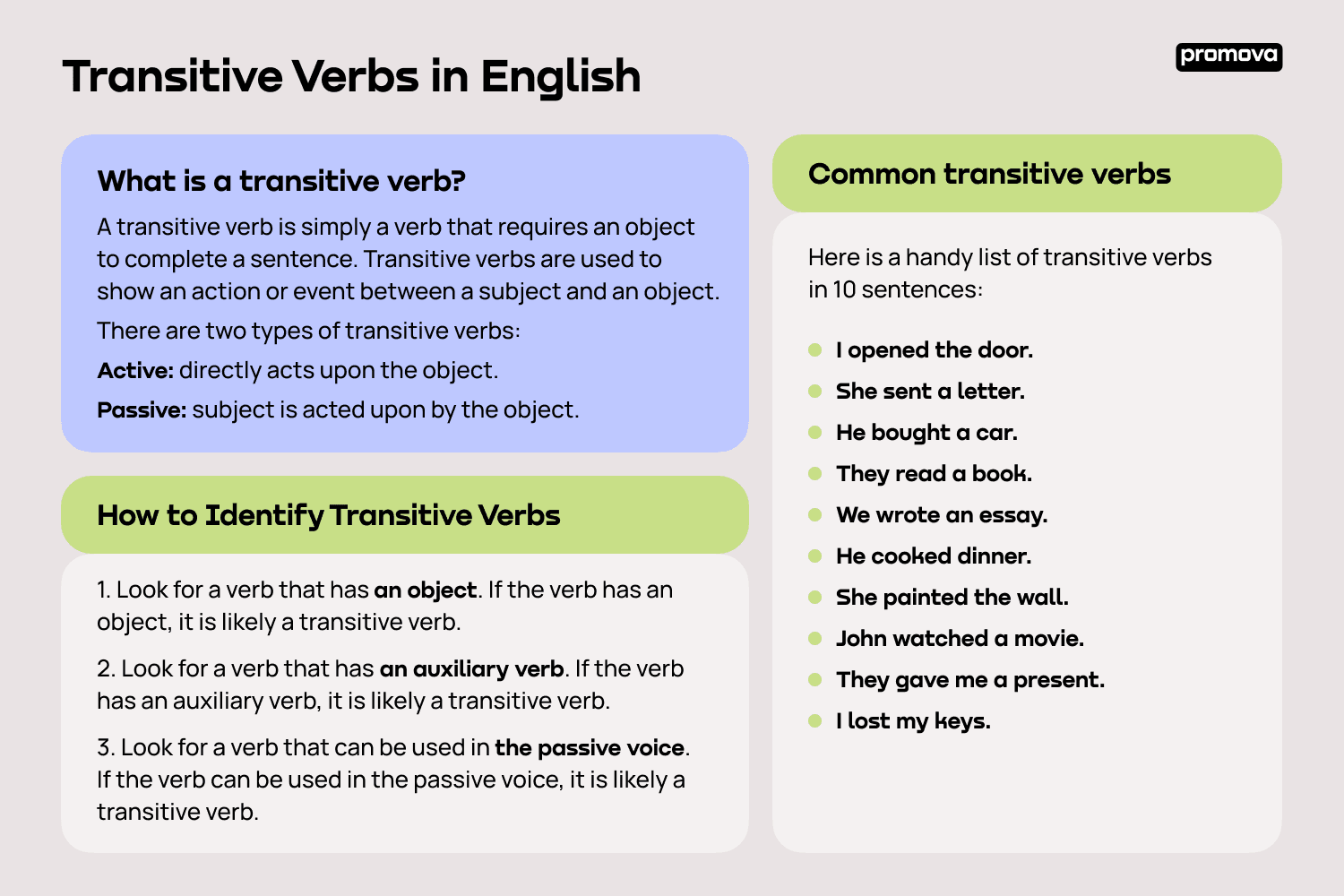Transitive verbs are action verbs that require a direct object to complete their meaning. In other words, they need to transfer their action to something or someone. Understanding transitive verbs is essential in constructing grammatically correct sentences.
Transitive verbs are an important part of English grammar. They help convey a clear message by showing the action being done and the recipient of that action. Without transitive verbs, sentences can be incomplete or confusing.
Example of Transitive Verb
One example of a transitive verb is “eat.” In the sentence “She eats an apple,” the verb “eat” is transitive because it transfers the action of eating to the direct object “an apple.” Without the direct object, the sentence would be incomplete or unclear.
Another example of a transitive verb is “write.” In the sentence “He writes a letter,” the verb “write” is transitive because it requires a direct object, which in this case is “a letter.” The action of writing is being transferred to the direct object.
Transitive verbs can also be used in sentences with indirect objects. For example, in the sentence “She gave him a gift,” the verb “gave” is transitive because it transfers the action of giving to both the direct object “a gift” and the indirect object “him.”
It is important to remember that not all verbs are transitive. Intransitive verbs, for example, do not require a direct object to complete their meaning. Understanding the difference between transitive and intransitive verbs can help improve your writing and communication skills.
Overall, transitive verbs play a crucial role in English grammar by connecting the action of a sentence to its direct object. By using transitive verbs correctly, you can ensure that your sentences are clear, concise, and grammatically correct.
Next time you write a sentence, pay attention to the verbs you use and see if they are transitive or intransitive. This awareness can help you improve your writing skills and communicate more effectively.
